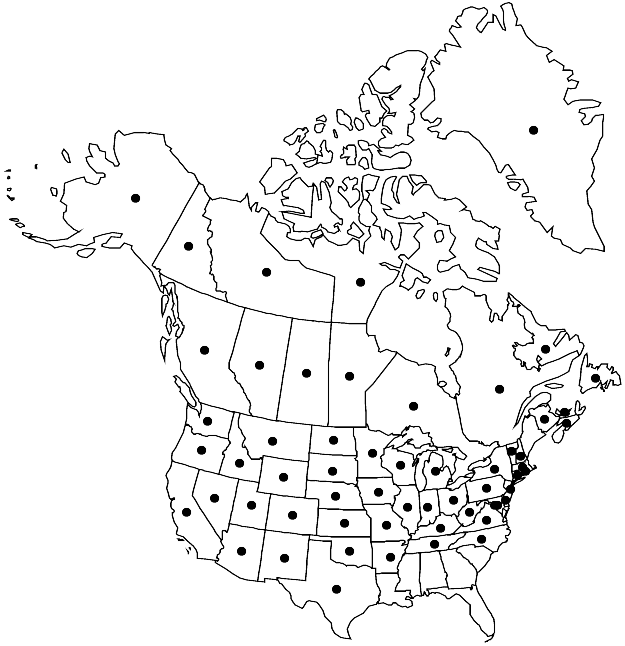Gemmabryum caespiticium
Phytologia 91: 497. 2009.
Plants large. Stems 0.1–2 (–3) cm. Leaves weakly to moderately concave, 0.5–2 (–3) mm; margins plane to strongly revolute, limbidium distinct to weak, of 1 or 2 rows of elongate incrassate cells; apex occasionally hyaline with age; costa short to long-excurrent, awn brown, yellowbrown, or sometimes hyaline, smooth or rarely somewhat denticulate, 1/4–3/4 leaf length; proximal laminal cells abruptly quadrate to rectangular, 1–2: 1 away from costa, 2–4: 1 along costa; medial and distal cells long-hexagonal, 12–18 (–20) µm wide, (3–) 4–6: 1. Specialized asexual reproduction rare, by deciduous brood branchlets in distal leaf-axils, and rhizoidal tubers, red, spheric, 100–200 µm, cells smooth. Capsule with endostome segments pale tan, brown, redbrown, or rarely pale-yellow. Spores 8–14 (–16) µm.
Phenology: Capsules mature Apr–Aug (spring–summer).
Habitat: Disturbed soil, earth banks, rotten wood, rock, disturbed habitats
Elevation: low to high elevations (0-4000 m)
Distribution

Greenland, Alta., B.C., Man., N.B., Nfld. and Labr., N.W.T., N.S., Nunavut, Ont., P.E.I., Que., Sask., Yukon, Alaska, Ariz., Ark., Calif., Colo., Conn., Del., D.C., Idaho, Ill., Ind., Iowa, Kans., Ky., Md., Mass., Mich., Minn., Mo., Mont., Nebr., Nev., N.H., N.J., N.Mex., N.Y., N.C., N.Dak., Ohio, Okla., Oreg., Pa., R.I., S.Dak., Tenn., Tex., Utah, Vt., Va., Wash., W.Va., Wis., Wyo., Mexico (Baja California), Mexico (Hidalgo), s South America, Europe, Asia, Africa, Atlantic Islands, Pacific Islands, Australia
Discussion
The combination of small caespitose plants with ovate-lanceolate concave leaves, strong awns, and inflated subalar cells on fertile stems is diagnostic of Gemmabryum caespiticium. The last character is also a diagnostic character of sect. Cladodium of Ptychostomum and known from a few other species in other genera (for example, Bryum dyffryense Holyoak).
Selected References
None.
Lower Taxa
"narrower" is not a number."narrow" is not a number.